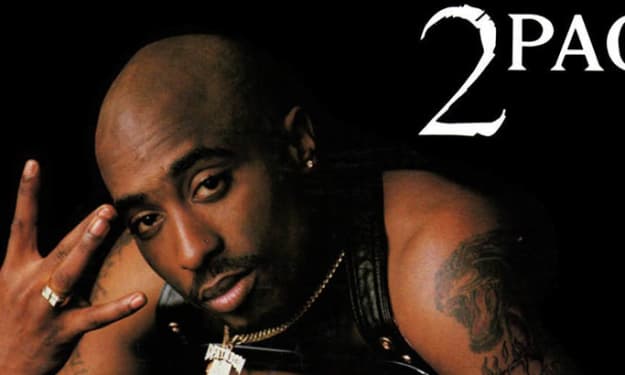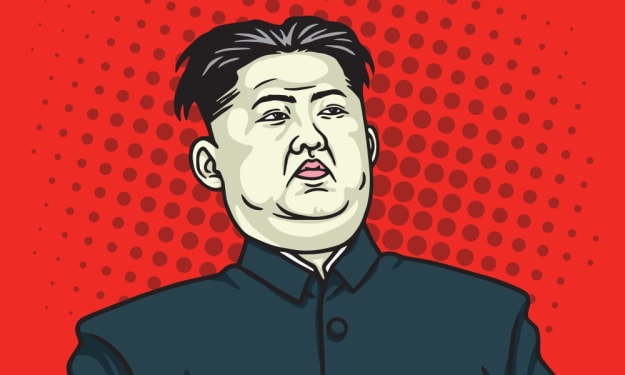The Notorious B.I.G.: A Legend in Hip-Hop History
by David Pieringer

The Notorious B.I.G.: A Legend in Hip-Hop History
The Notorious B.I.G., also known as Biggie Smalls, is one of the most celebrated and influential figures in the history of hip-hop. Born Christopher George Latore Wallace on May 21, 1972, in Brooklyn, New York, Biggie’s rise to fame, untimely death, and lasting legacy have cemented his status as a cultural icon. His storytelling prowess, lyrical genius, and charismatic persona transformed the landscape of hip-hop and left an indelible mark on the genre. This article delves into Biggie’s early life, his meteoric rise to fame, his contributions to hip-hop, his tragic death, and his enduring legacy.
Early Life and Influences
Christopher Wallace was born to Jamaican immigrant parents, Voletta Wallace, a preschool teacher, and Selwyn George Latore, a welder and politician. His father left the family when Biggie was just two years old, leaving Voletta to raise him alone. Growing up in the tough, crime-ridden neighborhood of Bedford-Stuyvesant, Biggie was exposed to the harsh realities of urban life from an early age.
Biggie attended private school until his mother transferred him to a public school in Brooklyn. He excelled academically but began to drift towards the street life, engaging in drug dealing by the age of 12. Despite his involvement in illegal activities, Biggie’s talent for rap was evident. He began performing with local groups and participated in freestyle battles, quickly gaining a reputation for his remarkable lyrical ability and commanding presence.
Breakthrough and Rise to Fame
Biggie’s life took a significant turn when a demo tape he recorded made its way to the hands of Sean "Puffy" Combs, a young A&R executive at Uptown Records. Impressed by Biggie’s talent, Combs signed him to his newly founded label, Bad Boy Records, in 1992. This partnership would prove to be a pivotal moment in Biggie’s career.
In 1994, Biggie released his debut album, "Ready to Die," which was both a commercial and critical success. The album showcased Biggie’s storytelling prowess, painting vivid pictures of his experiences and struggles. Tracks like "Juicy," "Big Poppa," and "Warning" became instant classics, earning Biggie widespread acclaim and establishing him as a dominant force in hip-hop.
"Ready to Die" was notable for its raw honesty and cinematic production. Biggie’s ability to convey the complexities of his life—from his humble beginnings to his rise in the music industry—resonated with a broad audience. The album’s success catapulted Biggie to superstardom, and he quickly became one of the most influential voices in hip-hop.
Contributions to Hip-Hop
Biggie’s impact on hip-hop extends far beyond his commercial success. He is widely regarded as one of the greatest rappers of all time, thanks to his distinctive flow, complex rhymes, and vivid storytelling. His ability to switch between gritty narratives and celebratory anthems showcased his versatility as an artist.
Biggie’s lyrical style was marked by its authenticity and depth. He drew inspiration from his personal experiences, crafting songs that addressed themes such as poverty, violence, and the pursuit of success. His storytelling ability set a new standard in hip-hop, influencing countless artists and shaping the direction of the genre.
In addition to his lyrical talent, Biggie played a crucial role in the development of the East Coast rap scene. At a time when West Coast rap dominated the industry, Biggie’s success helped to reestablish New York as a major hub for hip-hop. His collaborations with other artists, including Jay-Z, Lil' Kim, and The Lox, further solidified his influence and expanded his reach.
The East Coast-West Coast Rivalry
One of the most notorious aspects of Biggie’s career was his involvement in the East Coast-West Coast rivalry, a feud that defined hip-hop in the mid-1990s. This rivalry was fueled by a series of personal and professional conflicts between artists and record labels on both coasts. Biggie’s feud with West Coast rapper Tupac Shakur was particularly intense and highly publicized.
The tensions between Biggie and Tupac were exacerbated by a series of events, including Tupac’s shooting in 1994, for which he blamed Biggie and his associates, though no evidence supported this claim. The feud escalated through diss tracks, public statements, and media coverage, contributing to an increasingly hostile environment within the hip-hop community.
Despite efforts by some industry figures to mediate the conflict, the rivalry continued to intensify, ultimately leading to tragic consequences. The feud overshadowed much of Biggie’s career and remains a significant part of his legacy.
Tragic Death
On March 9, 1997, the world was shocked by the news of Biggie’s murder. He was shot and killed in a drive-by shooting in Los Angeles, just six months after the death of Tupac Shakur. Biggie was leaving a party hosted by Vibe magazine when his car was targeted. Despite numerous investigations and theories, the case remains unsolved, and Biggie’s murder continues to be a source of speculation and intrigue.
Biggie’s death sent shockwaves through the music industry and the broader community. He was only 24 years old at the time of his death, and his potential for future contributions to hip-hop was immense. His passing marked the end of an era and left a void in the genre that has never truly been filled.
Posthumous Releases and Influence
Following Biggie’s death, his music continued to resonate with fans and critics alike. His second album, "Life After Death," was released just weeks after his murder and became a monumental success. The double album featured hits such as "Hypnotize," "Mo Money Mo Problems," and "Sky’s the Limit," further cementing Biggie’s legacy as one of hip-hop’s greatest artists.
Several posthumous albums and compilations have been released, including "Born Again" (1999) and "Duets: The Final Chapter" (2005). These releases, featuring collaborations with various artists, have kept Biggie’s music alive and introduced his work to new generations of fans.
Biggie’s influence extends beyond his music. He is often cited as a major inspiration by contemporary hip-hop artists, who admire his lyrical skill, storytelling ability, and charisma. His impact on the genre is evident in the work of artists like Jay-Z, Nas, and Kendrick Lamar, who have all acknowledged Biggie’s influence on their careers.
Cultural Legacy
Biggie’s cultural legacy is vast and multifaceted. He is remembered not only as a musical genius but also as a cultural icon who transcended the boundaries of hip-hop. His life and career have been the subject of numerous books, documentaries, and films, including the 2009 biopic "Notorious," which chronicles his rise to fame and tragic death.
Biggie’s image and music continue to be celebrated in various forms of media and popular culture. Murals, tributes, and homages to Biggie can be found in cities around the world, reflecting his global impact and enduring appeal. His lyrics, often quoted and referenced, remain a testament to his talent and vision.
Personal Life and Relationships
Biggie’s personal life was as complex and multifaceted as his music. He was married to singer Faith Evans, with whom he had a son, Christopher Wallace Jr. (CJ). Biggie also had a daughter, T’yanna, from a previous relationship. His relationships and family life were often a source of inspiration for his music, providing a glimpse into his more vulnerable and reflective side.
Despite his success, Biggie faced numerous challenges, including legal troubles, personal conflicts, and the pressures of fame. His ability to navigate these challenges while continuing to produce groundbreaking music is a testament to his resilience and dedication to his craft.
Enduring Influence on Fashion and Style
Biggie was not only a trendsetter in music but also in fashion. His distinctive style, characterized by luxurious clothing, oversized leather jackets, and signature accessories like his iconic Coogi sweaters, made him a fashion icon. Biggie’s influence on hip-hop fashion is still evident today, with many artists emulating his bold and flamboyant style.
Biggie’s fashion sense extended beyond mere aesthetics; it was a reflection of his larger-than-life persona and his journey from the streets of Brooklyn to the heights of musical success. His ability to seamlessly blend street style with high fashion set a new standard in the industry, influencing countless artists and fashion enthusiasts.
Conclusion
The Notorious B.I.G.’s legacy is a testament to his extraordinary talent, his impact on hip-hop, and his enduring influence on music and culture. His life was a remarkable journey of triumph and tragedy, marked by his rise from humble beginnings to become one of the most revered figures in hip-hop history.
Biggie’s contributions to music, characterized by his storytelling prowess, lyrical genius, and charismatic persona, continue to resonate with fans around the world. His influence can be seen in the work of countless artists who have followed in his footsteps, striving to emulate his unique blend of authenticity and artistry.
More than two decades after his death, The Notorious B.I.G. remains a towering figure in hip-hop, a symbol of resilience, creativity, and the enduring power of music. His legacy lives on through his timeless music, his cultural impact, and the inspiration he continues to provide to new generations of artists and fans.
About the Creator
David Pieringer
Welcome to my page! I'm a dedicated writer and student with a passion for both education and sports. Balancing my love for learning with my athletic pursuits, I strive to excel in everything I do.
Enjoyed the story? Support the Creator.
Subscribe for free to receive all their stories in your feed. You could also pledge your support or give them a one-off tip, letting them know you appreciate their work.






Comments (1)
Hey, just wanna let you know that this is more suitable to be posted in the Beat community 😊